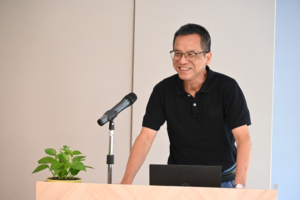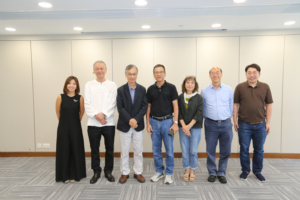On 26 September 2024, ICS Luncheon and Research Programme for Lingnan Culture Public Lecture Series invited Prof. Li Qingxin as the speaker to deliver a talk regarding the socio-economic evolution in the Pearl River Bay Area during the Age of Discovery.
Prof. Li is Chief Expert of the Yunshan Studio at the Guangdong University of Foreign Studies, and the co-editor-in-chief of Journal of Maritime History Studies. He has long been engaged in the research of maritime history, economic history, and Guangdong history. His works include The Overseas Trade System of Ming Dynasty, The Seaside World: Studies on the History of Trade in South China Sea and Sino-foreign Relations, and Maritime Silk Road.
During the talk, Prof. Li discussed the evolution of the Pearl River Bay Area’s layout. Before the Song dynasty, Guangzhou was the sole trading port in the region. In the mid-16th century, Macao emerged as another commercial hub, establishing a “dual centre” alongside Guangzhou. This arrangement, under the Canton System during the Qing dynasty, eventually evolved into a “multi-centre” system that included Guangzhou, Macao, and Foshan. The institutional framework formed in the mid-16th century has had a lasting impact on the relationships between Guangdong, Hong Kong, and Macao, significantly influencing China’s modernization process. People from across the country flocked to Guangzhou for commerce, while residents of Guangdong travelled abroad for business opportunities. Meanwhile, Western countries sought to “sail to the Pearl River”, looking for new trading opportunities. These cross-regional and transnational movements promoted the internationalization of urban populations.
Prof. Li concluded the talk by emphasizing the importance of studying the Pearl River Bay Area from a global history perspective. The transition of the region from having a sole trading port to a cluster of trading hubs laid the foundation for the coordinated development of the Guangdong-Hong Kong-Macao Greater Bay Area today. Research on the Pearl River Bay Area may contribute as a case study to the fields of bay area history and maritime history, while supporting the ongoing development of the Greater Bay Area.
*RGC Collaborative Research Project “Lingnan Culture and the World” (2023–2026)


